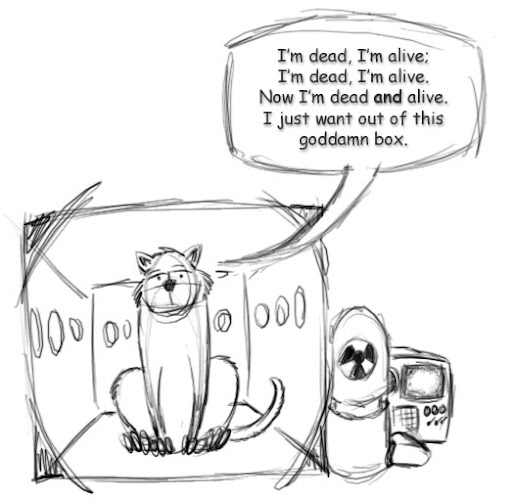List of invited speakers:
Gotthard Seifert (Technical University of Dresden, Germany)
Sergy Grebenshchikov (MPI, Gottingen, Germany)
Lorenz Cederbaum (Physikalisch-Chemisches Institut, Germany)
Andrea Cannizzo (EPFL, Switzerland)
Oleg Boiarkine (EPFL, Switzerland)
Luigi Bonacina (Université de Genève, Switzerland)
Zamik Rosenwaks (University of the Negev, Israel)
Vincenzo Aquilanti (University of Perugia, Italy)
Carlo Petrongolo (University of Siena, Italy)
Antonio Laganá (University of Perugia, Italy)
Camillo la Mesa (University of Rome "La Sapienza", Italy)
Vincenzo Schettino (Univerity of Firenze, Italy)
Marie-Louise Saboungi (C.N.R.S. / Université d'Orléans, France)
David P
 rice (CNRS-CRMHT, Orleans, France)
rice (CNRS-CRMHT, Orleans, France)Jean-Pierre Galaup (Centre d'Orsay, France)
Olivier Faucher (Institut Carnot de Bourgogne, UMR CNRS)
Osman Atabek (Lab. Photophysique Moléculaire du CNRS, France)
Claudine Crepin (Univ. de Paris Sud, France)
Niloufar Shafizadeh (Laboratoire de Photophysique Moléculaire du CNRS, France)
Roland Lefebvre (Univ. de Paris Sud, France)
Pascal Larregaray (Université Bordeaux1, France)
Pascal Honvault (Université de Franche-Comté, France)
Octavio Roncero (I.M.A.F.F. - C.S.I.C., Spain)
Pablo Villarreal (I.M.A.F.F. - C.S.I.C., Spain)
Tomás González Lezana (I.M.A.F.F. - C.S.I.C., Spain)
Antonio Aguilar-Navarro (Universitat de Barcelona, Spain)
Antonio J.C. Varandas (University of Coimbra, Portugal)
Timothy Wright (University of Nottingham, UK)
Jeremy M. Hutson (University of Durham, UK)
Alexei Buchachenko (University of Moscu, Russia)
Oleg Vasyutinskii (Ioffe Institute, RAS, Russia)
Toshio Kasai (Osaka University, Japan)
Koichi Yamachita (University of Tokyo, Japan)
Hiroki Nakamura (Institute for Molecular Science, Japan)
Stephen Berry (University of Chicago, USA)
Edwin L. Sibert ( University of Winsconsin, USA)
Kenneth Janda (University of California, USA)
Roger Anderson (University of California, USA)
Joel M. Bowman (Emory University, USA)
François Lique (University of Maryland, USA)
Sylvio Canuto (University of Sao Paulo, Brazil)
Edelsys Codorniú (InSTEC, Cuba)
Augusto Gonzalez (ICIMAF, Cuba)

The Conference will take place February 4 to 8, 2008, with a previous School from January 30th to February 2nd, 2008, in Havana, Cuba.
 The school will focus on graduate subjects for higher level formation of a new generation of young researchers. With this purpose, professors with excellence in both teaching and research have been invited to give short courses on some background topics according to the scope of the Conference.
The school will focus on graduate subjects for higher level formation of a new generation of young researchers. With this purpose, professors with excellence in both teaching and research have been invited to give short courses on some background topics according to the scope of the Conference.Third International School on Photodynamics, January 30th - February 2nd, 2008
Pre-conference School on Photodynamics
January 30 - February 2, 2008
Invited Professors:
Prof. Sergy Yu. Grebenshchikov Title: Non-adiabatic transitions in electronically excited molecules Contents :
- Born-Oppenheimer approximation, its violation near conical intersections.
- Adiabatic and diabatic representations.
- Semiclassical and quantum mechanical calculations of the transition probabilities/spectra for non-adiabatic dynamics in small molecules.
Contents
1. Rare gas aggregates
Tutorial I
-- The He2 paradigm. Experimental detection of HeN.
-- Systems composed by three identical particles.
-- Pair coordinates and distributed Gaussian functions (DGF).
-- The Ar3 example.
Tutorial II
-- Triangle requirement: three- dimensional cage.
-- Non-orthogonal basis: pseudo-eigenvalue problem and Löwdin method.
-- Distributions. Surfaces through Herón theorem.
2. Rg-BC Systems (Rg = rare gas atom, BC = diatomic molecule)
Tutorial III
-- Jacobi coordinates: bound and continuum states.
-- Interaction radiation/matter: perturbation treatment.
-- Photo-absorption cross-sections: Energy and time domains.
-- Vibrational photo-predissociation (VP). “Exact” treatment and dressed lines.
3. RgN-BC Systems , N > 1
Tutorial IV
-- N=2: Satellite or valence coordinates. Kinetic couplings.
-- Diabatic “exact” formulation.
-- Adiabatic and quantum-chemistry approaches.
-- Extreme cases: heavy and light BC molecules.
Tutorial V
-- Helium aggregates doped with diatomic impurities. Boson/fermion solvents.
-- N>2: The diatomic dopant as perturbed by the environment.
-- Polar/non polar molecules: Infra-red/Raman spectral simulations.
-- Relaxation mechanisms: VP and line broadening.






